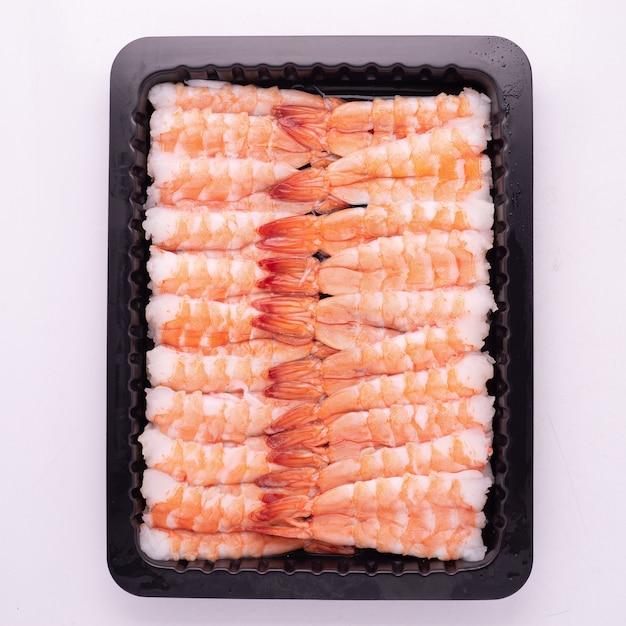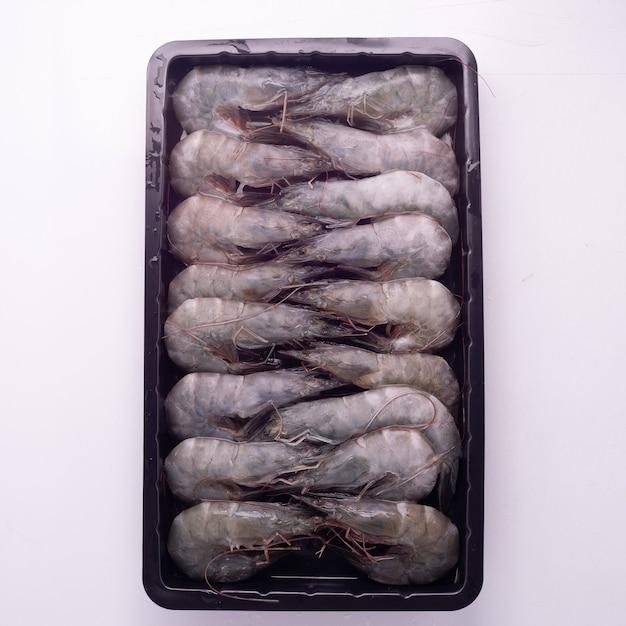So, you’ve got some frozen food that you’re itching to cook up for dinner, but you’re not quite sure how to defrost it safely. No worries, my friend, because in this blog post, we’re going to get down to the nitty-gritty of thawing frozen food the right way.
Improper thawing of food can lead to a whole host of problems, including foodborne illness and an unpleasant dining experience. But fear not, we’re here to guide you through the dos and don’ts of thawing that frozen chicken or meatballs.
In this article, we’ll walk you through the correct thawing procedures, tackle some common misconceptions, and explore the hazards of improper thawing. So grab a cup of tea, get cozy, and let’s dive in!
Which Thawing Method Should You Avoid When It Comes to Frozen Food
When it comes to thawing frozen food, it’s important to do it safely to avoid any potential health risks. While there are several recommended methods for thawing, there is one method that you should definitely steer clear of – the infamous room temperature method.
Why Room Temperature Thawing is a Recipe for Disaster
Room temperature thawing may seem like a convenient option, especially when you’re in a hurry to get cooking. However, this method poses a significant food safety risk. Leaving frozen food out at room temperature allows it to enter the danger zone, where harmful bacteria can rapidly multiply.
The Danger Zone – No Exciting Adventure, Just Trouble
The danger zone refers to temperatures between 40°F (4°C) and 140°F (60°C) – the prime environment for bacterial growth. When frozen food is left at room temperature, the exterior begins to thaw while the core remains frozen, creating an ideal breeding ground for bacteria like Salmonella and E. coli.
Bacteria’s Playground: Why You Should Avoid It
Bacterial growth can lead to foodborne illnesses, causing symptoms like nausea, vomiting, diarrhea, and more. Nobody wants their meal to become a terrifying rollercoaster ride, do they? So, let’s keep foodborne bacteria off the guest list by avoiding room temperature thawing methods.
Safe Thawing Alternatives: Choose With Confidence
But fear not! There are safer alternatives to thaw your frozen food. Here are a few methods that will ensure your meal is both tasty and free from harmful bacteria:
1. Refrigerator Thawing – The Chill Approach
Refrigerator thawing is the gold standard when it comes to food safety. Simply transfer your frozen food from the freezer to the refrigerator and let it thaw slowly. Although this method requires a bit of advanced planning, it’s the safest and most effective way to thaw.
2. Cold Water Thawing – The Energetic Splash
If you’re short on time, the cold water method can come to the rescue. Place your frozen food in a sealed plastic bag and submerge it in cold water. Make sure to change the water every 30 minutes to maintain a safe temperature. This method allows for quicker thawing while still keeping bacteria at bay.
3. Microwave Thawing – The Zapping Wizard
Ah, the magical powers of a microwave! For those moments when you need lightning-fast thawing, the microwave can be your trusty sidekick. However, it’s essential to follow the microwave’s instructions carefully to ensure even thawing without partial cooking.
Don’t Take the Shortcut, Take the Safe Route
While room temperature thawing might seem like an easy way out, it’s definitely not the safest one. Keep your culinary adventures on the enjoyable side by avoiding this risky method. Instead, opt for refrigerator thawing, cold water thawing, or microwave thawing – all proven ways to get your food thawed and ready to cook while keeping bacteria at bay. Stay safe, stay delicious!
FAQ: Which Is Not A Safe Way To Thaw Frozen Food
Welcome to our FAQ section, where we answer all your burning questions about thawing frozen food. We understand that defrosting food can be a bit tricky, and using improper methods can lead to potential risks. So, let’s dive right in and address some common queries to ensure you’re thawing your frozen goodies safely and deliciously!
Is Incorrect Thawing Temperature Abuse
Improperly thawing frozen food can indeed be considered temperature abuse. When food is exposed to incorrect temperatures during the thawing process, harmful bacteria can multiply rapidly, posing serious health risks. It’s crucial to handle thawing with care to avoid any “temperature tantrums” from your food!
What is the Proper Way to Defrost Chicken
To defrost chicken safely, we recommend following the “thaw ahead” technique. Place the chicken in a refrigerator set to a temperature of 40°F (4.4°C) or below, allowing it to thaw slowly and steadily. Remember, patience is key when it comes to thawing chicken!
What is an Example of Improper Thawing Procedure
One prime example of improper thawing is leaving frozen food, like chicken, on the kitchen counter at room temperature. This allows the surface to thaw quickly while the inside remains frozen, creating a hospitable environment for bacteria to throw a “thawing party” on your food. Let’s not give them the chance!
What is One of the Correct Ways to Thaw TCS Food
Ah, excellent question! When it comes to thawing Time/Temperature Control for Safety (TCS) food, such as fish or meat, the safest method is to utilize the refrigerator. Simply place the frozen food in a container, cover it, and let your fridge work its magic. Your TCS food will thank you later!
What is the Risk of Incorrectly Thawing Food
The risks of mishandling the thawing process are no laughing matter. Improper thawing can cause bacteria to multiply rapidly, possibly leading to foodborne illnesses. We definitely don’t want any uninvited guests crashing our food party, do we?
Which Method is a Safe Way to Thaw Food
One of the approved methods to safely thaw food is using the microwave. However, make sure to cook the food immediately after thawing using this method. Consider it the “quick defrost and speedy cooking” method—convenience at its best!
Which Method of Thawing is Correct
When it comes to thawing frozen food, there’s no one-size-fits-all answer. It depends on the type of food you’re thawing. The refrigerator method is generally a safe bet, ensuring a slow and steady defrosting process without compromising quality or safety.
How Can I Defrost Chicken Quickly and Safely
In a hurry to defrost your chicken? Fear not, for we have a solution. Place the frozen chicken in a leak-proof plastic bag and submerge it in cold water. Remember to change the water every 30 minutes to maintain the proper temperature. It’s like giving your chicken a refreshing spa treatment!
Is There a Wrong Way to Thaw Chicken
Oh, you bet! As mentioned earlier, leaving chicken out on the kitchen counter or attempting to speed up the process with hot water are big no-no’s. These methods can lead to uneven thawing, dangerous bacterial growth, and a tummy ache waiting to happen. Let’s keep the chicken drama-free, shall we?
What is the Incorrect Way to Thaw Meat
To avoid any meaty mishaps, never thaw meat at room temperature. This method creates the perfect environment for bacteria to thrive, turning your mealtime into a not-so-fun rollercoaster ride. Remember, slow and steady wins the thawing race!
How Does Improper Thawing Lead to Foodborne Illness
When you improperly thaw food, it’s like throwing a fabulous party for bacteria. By exposing the food to improper temperatures or leaving it sitting out for too long, bacteria multiply rapidly and can cause foodborne illnesses, leading to some not-so-pleasant digestion experiences. Let’s be diligent and keep the bacteria guest list at zero!
What is the Only Method to Thaw Food That Allows You to Refreeze it Without Cooking
Only one method allows you to safely refreeze thawed food without cooking it: the refrigerator method. This method ensures a controlled thawing process, maintaining food safety while giving you the freedom to refreeze your goodies for a later feast. It’s like a “get out of cooking free” card!
Which is an Approved Method of Thawing Frozen Food
Apart from the refrigerator method, you can also use the cold water method. By submerging the sealed package in cold water, you ensure even thawing while avoiding any bacterial “hotspots.” Time to give your frozen food a refreshing swim!
What is the Proper Thawing Procedure for Frozen Food
The proper thawing procedure for frozen food includes using methods like the refrigerator or cold water technique. Choose the method that suits your schedule and available resources, ensuring your food is safely defrosted and ready to be transformed into a delicious masterpiece!
How Do You Safely Thaw Food
To safely thaw frozen food, remember these golden rules: always thaw in the refrigerator, use the cold water method if you’re short on time, or utilize the microwave for quick defrosting followed by immediate cooking. By following these guidelines, you’ll thaw like a pro and keep your taste buds happy and healthy!
What is Improper Thawing
Improper thawing refers to the act of defrosting frozen food in an unsafe manner. This can include leaving food at room temperature, using hot water, or any method that creates an environment conducive to bacterial growth. Let’s leave the bacterial party planning for another occasion!
Is it Bad to Defrost Chicken in Hot Water
Yes, it is definitely not recommended to defrost chicken in hot water. While it may seem like a convenient shortcut, the hot water method can lead to partial cooking of the outer layer while the inside remains frozen. It’s like wearing a winter coat in the sauna—uneven and downright unpleasant!
What Thawing Method Should the Food Worker Use
Food workers should be well-versed in the approved thawing methods: refrigerator, cold water, and microwave (followed by immediate cooking). Proper training ensures they choose the most suitable method according to the specific food and circumstances, resulting in safe and tasty dishes!
What is a Bad Way to Thaw Food
If you’re aiming to thaw food the wrong way, just remember two words: room temperature. Leaving your frozen food out on the counter creates a bacterial paradise, putting your taste buds and belly at risk. Let’s keep our food “cool” and bacteria-free!
What is the Thawing Process
The thawing process involves transitioning your frozen food from cold to a safe temperature for consumption. By following approved methods like refrigerator thawing, cold water immersion, or utilizing the microwave, you ensure a smooth and safe thawing experience. It’s like giving your food a VIP pass to the main course!
What are the 4 Ways to Thaw Foods Safely
The four delightful ways to safely thaw food are:
- Refrigerator Method: Slow and steady, this method involves defrosting your food in the refrigerator for a controlled thawing process.
- Cold Water Method: Submerge your tightly sealed package in cold water, changing the water every half hour to maintain the proper temperature.
- Microwave Method: The “now you see me, now you don’t” method involves using the microwave to defrost food quickly, followed by immediate cooking.
- Refreezing Method: Only the refrigerator thawing method allows you to refreeze thawed food without cooking it first. Keep the cold chain going!
Congratulations! You’ve made it through our FAQ section on thawing frozen food. By now, you’re equipped with the knowledge to prevent any thawing disasters and keep your taste buds dancing with joy. Remember to thaw your food using approved methods like the refrigerator, cold water, or microwave, and bid farewell to any bacterial “party crashers” along the way. Stay safe, stay thawed, and enjoy your tasty culinary adventures!

